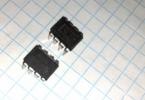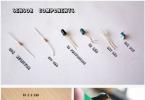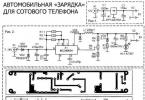Nissan antifreeze is supplied to the market Japanese manufacturer. The product belongs to cooling, widely consumed liquids of excellent quality, designed specifically for Nissan car. Only branded liquids are distinguished by unique chemical composition, which is optimally combined with engine cooling systems installed on cars of the described brand. There are two types of Nissan antifreeze that are in great demand.
Description Nissan Coolant L250
A liquid with a cooling effect of this type was originally produced to equip all Nissan vehicles. Distinctive feature this refrigerant is high technical specifications, which is confirmed by numerous consumer reviews, verified independent tests. As for the replacement period, it is 6 years; you can also change it after traveling 90 thousand km.
ATTENTION! A completely simple way to reduce fuel consumption has been found! Don't believe me? An auto mechanic with 15 years of experience also didn’t believe it until he tried it. And now he saves 35,000 rubles a year on gasoline!
It is worth knowing that coolant type Coolant L250 from Nissan is currently discontinued. Previously it was produced according to the article numbers:
- KE90299944 - 5 l;
- KE90299934 - 1 l.

The replacement was the developed updated coolant of the Coolant L248 type, which is an analogue of the described product. Due to this feature, L250 and L248 refrigerants are allowed to be mixed, which will not cause any harm to the vehicle engine. However, when diluting the described compositions, their replacement period is reduced to 60 thousand km, which is equal to approximately three years of vehicle operation.
Review of antifreeze L248
This coolant has a blue-green hue, its base is ethylene glycol, and it also contains ethyl alcohol. Coolant L248 is the only refrigerant recommended by the manufacturer itself for filling into Nissan cars. Among Japanese car brands, in which it is not advisable to use the described coolant, the following are distinguished:
- Interstar;
- Primastar;
- Kubistar.
 For these models, an original Nissan coolant has been developed, belonging to class D, which has no analogues in the world. The product is produced in volumes of 5 l (KE90299945) and 1 l (KE90299935), as for the freezing point, it is 38 °C. The liquid is completely ready to be poured into the automotive system.
For these models, an original Nissan coolant has been developed, belonging to class D, which has no analogues in the world. The product is produced in volumes of 5 l (KE90299945) and 1 l (KE90299935), as for the freezing point, it is 38 °C. The liquid is completely ready to be poured into the automotive system.
Antifreeze brand L248 prevents oxidation processes of individual engine parts, prevents the development of corrosion processes, boiling, and leaks. Special coolant components extend service life cooling system car. The presence of innovative components allows for rare replacement of refrigerant, which in extreme conditions can also be diluted with distilled water.
About the advantages and disadvantages
If we talk about original antifreeze Nissan, it has a number of positive and negative indicators, just like any other widely consumed automotive product. From positive properties The following are noted:

Among the visible shortcomings it is noted high price the product being described. The difficulty of purchasing lies in the fact that original Nissan coolant is supplied to regular points of sale in small quantities. It must be purchased in specialized official stores.
To avoid buying a low-quality fake, you need to follow simple but effective recommendations. It is important to check the liquid for sediment at the bottom sold containers. Real antifreeze from Nissan is a homogeneous liquid that does not contain any impurities or inclusions. The original packaging is smooth and without the slightest defects, supplemented by a sticker containing detailed composition product, its article number, sale date, etc.
Refrigerant replacement
 Correct and normal operation of the car is ensured by timely replacement of the coolant. You should not wait for its level to drop to critical levels, which can lead to machine breakdown. According to technical standards, developed for Nissan, the original refrigerant from the manufacturer is replaced upon reaching no more than 90 thousand km. mileage
Correct and normal operation of the car is ensured by timely replacement of the coolant. You should not wait for its level to drop to critical levels, which can lead to machine breakdown. According to technical standards, developed for Nissan, the original refrigerant from the manufacturer is replaced upon reaching no more than 90 thousand km. mileage
Before proceeding with the replacement, it is necessary to cool the motor completely. After this, all pipes are disconnected, the cap is removed from the expansion tank, and the remaining liquid used is drained. If there is sediment or foreign flakes in it, the cooling system must be thoroughly flushed. For this purpose, ordinary water is used. When all preparatory procedures have been completed, expansion tank the original antifreeze is poured in, the engine is started, the correct operation is checked . Next, check the refrigerant level in the working tank, if necessary, it is topped up to the indicated mark.
Features of fluid replacement
Antifreeze in Nissan cars replaced in the same way as in other vehicles. No special deep knowledge or skills are needed here. However, experts recommend adhering to the following rules:

Original coolant from Nissan is a high-quality and time-tested product. It provides uninterrupted and correct work car, contains special additives that prevent premature wear individual parts.
Engine Nissan Tiida in operating condition it heats up to high thermal values. But for normal functioning of the car, the temperature in the system should not exceed 90 degrees. Therefore, it is very important to monitor the condition of the antifreeze, which maintains temperature regime fine. Timely replacement This liquid allows you to avoid negative consequences.
Stages of replacing coolant Nissan Tiida
For complete replacement Antifreeze will require draining the liquid not only from the radiator, but also from the engine block. Fortunately, the manufacturer has provided for this drain plugs, which, if there is a pit or a lift, are not so difficult to get to.
This model in different countries was sold under different names, so the instructions for replacing the coolant are suitable for:
- Nissan Tiida 1 (Nissan Tiida I C11 Restyling);
- Nissan Tiida 2 (Nissan Tiida II C13);
- Nissan Latio;
- Nissan Versa;
- Nissan Pulsar.
In Russia, versions with an engine capacity of 1.8 and 1.6 petrol are popular, as they were sold officially. Although there are versions with 1.5 liters in diesel and petrol versions.
Coolant drain
Before adding new antifreeze, it is necessary to drain the old one; this procedure is carried out when the engine has cooled. The tools you will need are a 14mm socket wrench, a Phillips screwdriver, and pliers. You should also have a rag on hand for wiping and a 10-liter container for draining liquid. Due to the toxicity of the coolant, you must be careful when working with it.
The old antifreeze is drained in the following sequence:

Please note that sealant is applied to the drain bolt. Therefore, when installing it back, do not forget to lubricate it.
After draining, we put everything in its place, now the old antifreeze has been removed from the cooling system as much as possible, you can move on to the next stage.
Flushing the cooling system
To new antifreeze has served for a long time and has not lost its properties; if there is dirt, scale, or rust in the radiator, you need to perform the procedure of flushing the cooling system. If this is not done, corrosion residues will mix with the coolant and will soon need to be replaced again.
Usually, simple distilled water is sufficient for rinsing, as the car manufacturer also mentions.
To flush the Nissan Tiida cooling system, fill the radiator and expansion tank with distilled water. We start the engine and wait until it warms up to operating temperature, after which we increase the speed to 2500 for 1-2 minutes.
We turn off the engine, wait for it to cool and drain the liquid. The procedure must be repeated several times until the water becomes clear. After flushing, there should be no deposits or traces of old antifreeze left in the system. This will have a positive effect on the service life of the new antifreeze.
Filling without air pockets
The final stage is directly pouring new antifreeze. Before which you need to check the integrity of all pipes and clamps. Damaged parts must be mandatory replacement. We also check that everything is closed drain holes so that they are closed. And you must not forget to apply high-temperature sealant to the cylinder head plug.
Filling with new antifreeze consists of the following steps:
- We find the hose going to salon stove, we remove it. This is done to allow air to escape so that no air pockets form when filling. This is a difficult operation, since the hose itself is in in an inconvenient place, and the clamp is quite rigid. After removal, you can replace the clamp with a screw one, this will simplify the task. The diameter of the hose is approximately 27 millimeters.
- Fill the expansion tank to the maximum level and slowly begin to pour antifreeze into the radiator. As soon as from removed hose liquid flows out, put it in place and fill the radiator to the top of the neck. Close the filler plugs.
- After filling the system, start the car, let the engine warm up to operating temperature, and periodically add gas.
At correct execution During the procedure, no air pockets should form in the system. This will be indicated by uniformly heated radiator pipes, upper and lower. And also a fully working stove.
If the stove blows cold, the hoses are not heated evenly, you can hear liquid flowing, it means airlock still formed. In this case, you need to eliminate it the old fashioned way. Drive the front of the car onto a hill, lift up your nose. Put the handbrake on and raise the speed, accelerate, for 3-5 minutes.
After a complete replacement, do not forget that after the engine has cooled, you need to check the coolant level in our Nissan Tiida again and top up if necessary.
Replacement frequency, what antifreeze to fill
 The first coolant replacement in a Nissan Tiida must be done after 90 thousand kilometers or after 60 months. Subsequent replacements must be done at intervals of 60 thousand.
The first coolant replacement in a Nissan Tiida must be done after 90 thousand kilometers or after 60 months. Subsequent replacements must be done at intervals of 60 thousand.
Also, in the future, it is necessary to periodically check the quality and level in order to detect an antifreeze leak in time for immediate elimination. Failure to do so may result in expensive repairs, as well as wear of working parts.
For of this car The original Nissan Coolant L248 Premix green antifreeze is suitable. When searching for analogues, it is advisable to select liquids with Nissan approval or in accordance with the vehicle documentation.
Among the analogues that meet the requirements, the following are suitable:
- Coolstream JPN;
- Ravenol HJC Hybrid Japanese Coolant PREMIX.
If this is not possible, it is permissible to use coolant from third-party manufacturers that is identical in properties and composition.
How much antifreeze is in the cooling system, volume table
Leaks and problems
When a leak is detected, you need to determine the location and make a decision based on this. If there is a leak in the pipe or a problem in the clamp, you can try to fix it yourself. But if the problem is more serious, for example, antifreeze leaking from under the head, then it is better to contact a specialized service to fix it.
Video
Owners Nissan cars who closely monitor their vehicle, probably know about branded antifreezes L248, L250 and L255. Let's figure out what these coolants are.
Branded antifreeze Nissan L248
Coolant L248 Premix antifreeze was created specifically for Nissan vehicles. This product is positioned as a unique coolant designed for cooling systems of trucks and passenger cars Nissan.
However, in fact, apart from the quality and balance of components, there is nothing super unusual in L248 antifreeze. They are the same as most coolants SAE standard J1034, prepared from ethylene glycol, water and a package of organic and inorganic additives. But unlike other coolants, this antifreeze does not contain silicate compounds. This has a positive effect on the intensity of heat removal from the cooling jacket into the coolant due to the formation of a film with greater thermal conductivity.

The main protective components in L248 antifreeze are phosphate and carboxylate additives. Phosphate protect the walls of the cooling jacket from the aggression of ethylene glycol due to the formation of a thin protective film. But if there is a lack of fluid in the system, phosphate compounds can cause airing in the circuit. Therefore, among motorists there is such unspoken rule: it is better to add water to the expansion tank than to drive with insufficient level. Carboxylate compounds block areas with the beginnings of corrosion and prevent the growth of damage.
The service life of L248 coolants is limited to 3-4 years. After this time protective properties additives drop and the cooling system may begin to deteriorate.
In general, an unofficial analogue of Nissan antifreeze (or at least a product similar in characteristics) is the G12++ brand antifreeze, which is widespread on the Russian market. It can be poured into the cooling systems of Nissasn cars instead of the expensive L248, as well as L250 and L255.

Antifreeze L250 and L255
Antifreeze Nissan L250 (and its later modification L255) is almost completely identical to the L248 product. They are also created on the basis of ethylene glycol and water, and contain a combined package of organic and inorganic additives. The main differences are color and durability.
Antifreeze brand L248 has a greenish tint. Due to a less enriched and balanced additive package, it ages slightly faster than other Nissan branded products. Coolants L250 and L255 are colored Blue colour. Their service life has been increased to 5 years.
In terms of impact on the cooling system and heat dissipation intensity, the differences between branded antifreezes No for Nissan cars.




